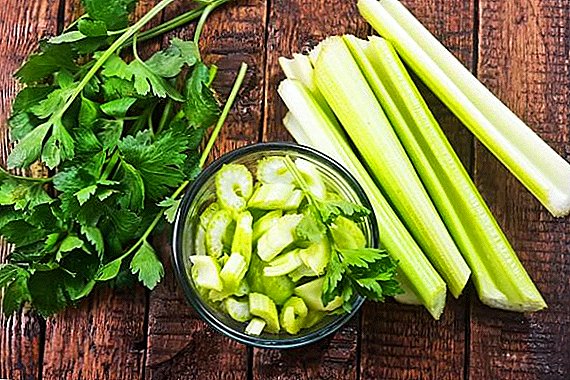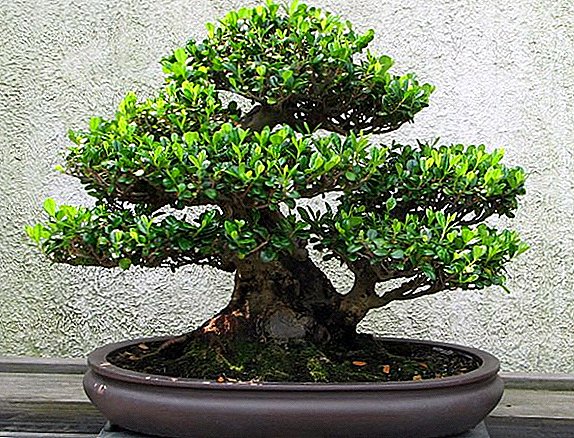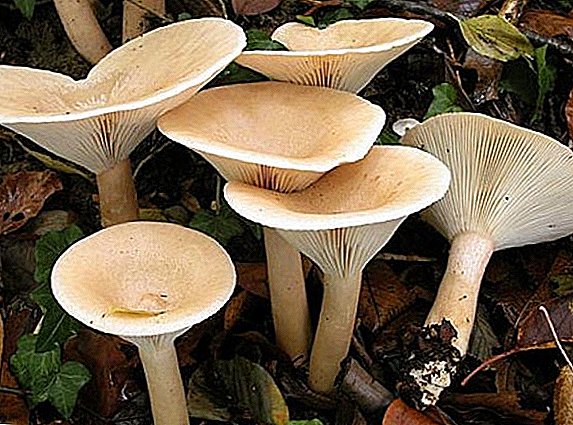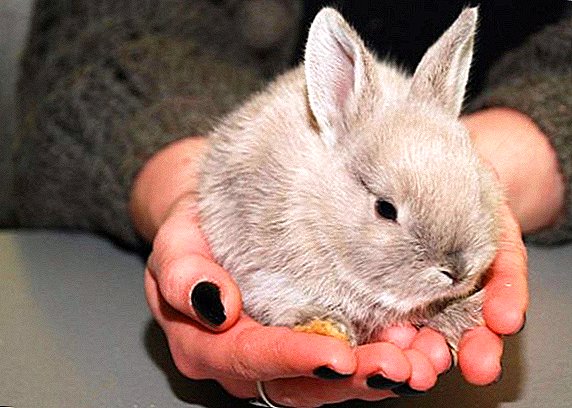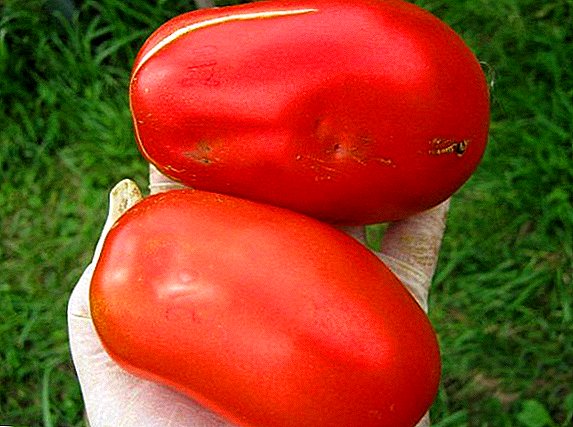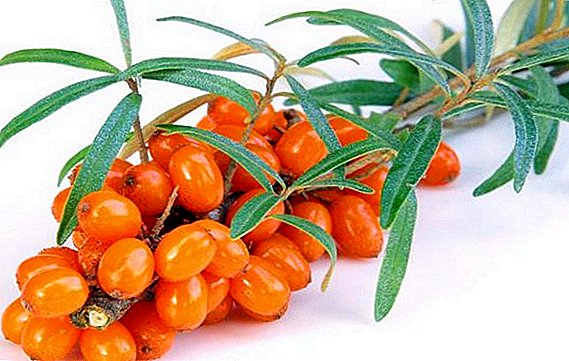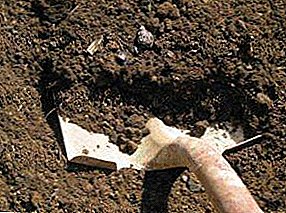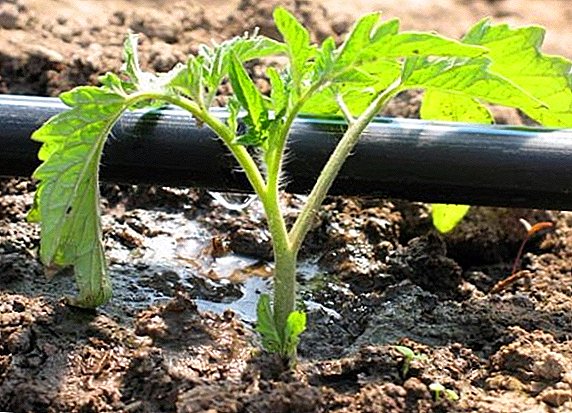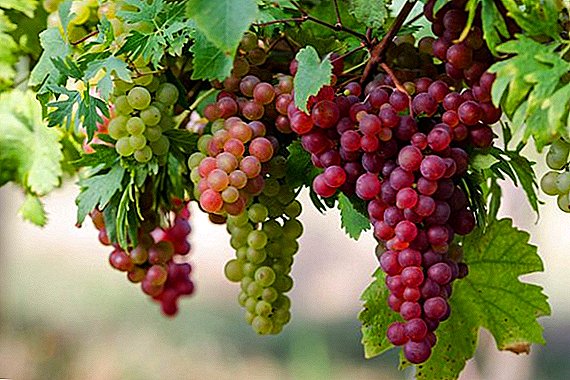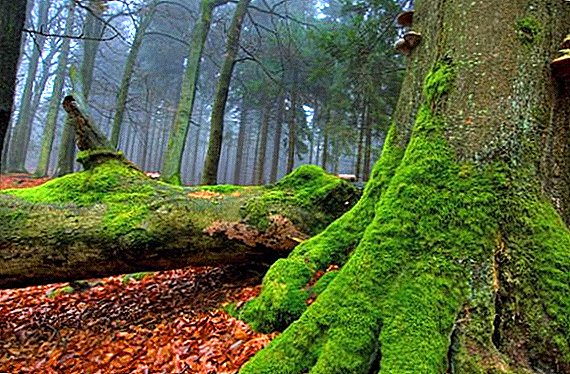 About mosses and lichens, most of us know only that they are the simplest types of plants, and also that according to which side the moss grows, you can somehow get out of the forest if you get lost. But terms such as briology or sphagnum may not be understood by anyone who is not a professional biologist, florist or aquarist. Fill the gap in knowledge, because it is quite interesting!
About mosses and lichens, most of us know only that they are the simplest types of plants, and also that according to which side the moss grows, you can somehow get out of the forest if you get lost. But terms such as briology or sphagnum may not be understood by anyone who is not a professional biologist, florist or aquarist. Fill the gap in knowledge, because it is quite interesting!
What are mosses and where do they occur
Mosses (more precise, moss-like) are a division of the plant kingdom, combining such species, in the reproduction cycle of which the gametophyte (sexual generation with a single set of unpaired chromosomes) dominates over the sporophyte (asexual generation).
The scientific definition of mosses is bryophytes, hence the name of the botany section that studies them - briology. The overwhelming majority of moss-like species belong to the class of leafy mosses.
The stems of these plants, which are located above the surface of the earth, are dotted with small leaves-outgrowths, while the underground part has many long filamentous processes, the so-called rhizoids. Representatives of this species have both similarities and significant differences from their relatives in the kingdom.
Mosses, like mushrooms and bacteria, multiply by spores. At this early and transient asexual stage of their life cycle, mossy forms represent a simplest formation (sporophyte) in the form of a box on a leg, physiologically related to its mother plant.  The sporophyte performs one single function - it ensures the maturation of the spores, after which it quickly dries and dies.
The sporophyte performs one single function - it ensures the maturation of the spores, after which it quickly dries and dies.
The sexual generation briophyte - the second stage of the life cycle - is a perennial plant (gametophyte), which has the similarity of root processes and leaf-like outgrowths. However, this is only a superficial resemblance to leafy plants.
Important! Mosses have neither roots, nor colors, nor the vascular conducting system in the traditional understanding of these terms.
Due to the lack of a genuine root system, mosses have a critical dependence on the humidity of the air, up to a complete suspension of life in arid time. As soon as the moisture level is restored, the plant comes to life. It is difficult to imagine the terrain, wherever mosses grow.
Under favorable conditions, these plants are able to tighten huge areas in forests and woodlands, settle on soil, trees, other plants, stones, sand, in any climatic zones - from the Arctic to the desert. They do not get along only in salty sea water. 
Mosses value
The value of mosses in the formation and development of the Earth's biosphere is difficult to overestimate. From prehistoric times, the ancient progenitors of modern lichens, mosses and ferns gradually colonized lifeless wastelands, creating soil cover for other plants, as a result of their life activity, and thus becoming a kind of "pioneer" in gardening our planet.
Important! Mossy are the basis of wetland ecosystems. In arid areas, due to the property like a sponge, to accumulate and maintain large volumes of water, mossy thickets prevent the advance of the desert.
In the places of their dominant growth, bryophytes are capable of covering huge areas of the earth's surface, acting as a natural refuge for animals and birds. In the areas of tundra and permafrost, they are a stabilizing factor that prevents the melting of underground ice, the formation of landslides and ravines, contribute to the preservation of the terrain.
Video: the value of mosses
If we talk about the value of mossy for a person, then their application is very diverse. Extracts from certain species of these plants can be used in cosmetology and medicine as tonic, antiseptic and hemostatic agents.
Centaury, yellowcone, nut grass, ginger and pear also have an antiseptic effect.
For residents of the Far North, far from civilization, moss is very relevant as a natural insulation of dwellings, and, say, in the taiga can be used as a dressing material in the provision of medical care.
Decorative species of moss - one of the most important elements of landscape design and design of floral compositions. And yet, above all, peat is used in human life - natural deposits of dying sphagnum mosses.
Junior, wild rose, cypress, yew, fir, hydrangea, magnolia, thuja, pine, lilac, jasmine, spirea, forsythia, rhododendrons, violets, daisies, lilies of the valley, roses, marigolds, irises and peonies are often used in landscape design.
 Peat is applied:
Peat is applied:- as fuel in power;
- as a raw material and filler for soil mixtures and fertilizers, as well as mulch in agricultural engineering and agriculture;
- as a laying on fur farms and poultry farms;
- as a heater in construction;
- in metallurgy, medicine, chemical industry, ecology and many other industries.
Forest mosses
Forest - an ideal place for the growth of moss. Here they get along on trees, stones, along the banks of streams and lakes, preferring rather shaded, damp places, often covering large spaces with a solid carpet.
All of them belong to the class of moss-bearing mosses, and, therefore, have a stalk, in the above-ground (above-water) part covered with small leaves, and in the lower, constantly dying part, poached by numerous outgrowths. Different species of mosses differ not only in the shape and color of the leaves, but also in the density and direction of growth of the stalks.  It should be noted that in warm and humid weather mossy thickets always have a lush and juicy appearance, playing with colors ranging from bluish-green to yellow-brown, which creates a truly amazing sight. In the absence of moisture, all this splendor quickly fades, as if covered with a thick layer of dust.
It should be noted that in warm and humid weather mossy thickets always have a lush and juicy appearance, playing with colors ranging from bluish-green to yellow-brown, which creates a truly amazing sight. In the absence of moisture, all this splendor quickly fades, as if covered with a thick layer of dust.
The most common representatives of forest moss are:
- Klimatsium.
- Mn
- Ptilium.
- Sphagnum.
- Rodobrium
- Gilokomium.
We recommend to read about how to deal with moss marching on your site.
Tree Climate
The above-ground part of the climacium is a short stalk (up to 15 centimeters), which rises vertically upwards, several times branching in various directions, and in fact resembles a small tree.  The “trunk” and “branches” of this tree are dotted with small scaly leaves, which, when dry, play with bright yellowish-green shades.
The “trunk” and “branches” of this tree are dotted with small scaly leaves, which, when dry, play with bright yellowish-green shades.
Did you know? Interestingly, mosses can wake up even after a very long freeze. So, in 2014, scientists found samples of frozen mosses at the South Pole. Their age was determined in 1530 years. After some two or three weeks spent in an incubator with suitable conditions, the moss began to grow. Among briologists this event was perceived as a sensation.
The lower (underground) part of the stem is creeping, dotted with barely noticeable rhizoid threads. Branching, it forms a kind of network, in the nodes of which the bushes of the above-ground part rise. Sporogon cylindrical box is located on the long stem in red and contains from 12 to 15 spores.
Climacium can often be found on clarified areas in dense, moist forests, near swamps, rivers, and on the shores of lakes. 
Mnium
Under this name hides a whole genus of moss, numbering more than forty species.
The most common members of this genus are as follows:
- midi, or mnium wavy;
- mnium wrinkled;
- peaked or forestry;
- mnium is average;
- the point point;
- mnium zinclidea.
The main feature of the mnium is rather large (up to 5 mm) leaves of oval shape, freely located in one plane from two opposite sides on a single stalk, not exceeding five centimeters in length.
Did you know? Surprising is the fact that the living cells of the leaves of the mnium are also located in the same plane. In other words, the sheet has the smallest possible thickness - just one cell.

In dry weather, the leaves of the mnium are extremely wrinkled and greatly reduced in size. Sporogon has an oval box, hanging from a yellowish-red leg, no longer than 3 centimeters. A box can ripen from 17 to 30 spores (depending on the variety).
Mnium is distributed everywhere, mainly in the forests, preferring at the same time densely planted pine forests with moist soil. Often settles on stones and old stumps, forming bright green thickets.
Learn more about growing netery (coral moss).
Ptilium
In the pine forests and spruce forests (always with an admixture of pine) you can find one of the most elegant mossy birds - the poulilium. Despite its widespread distribution, it almost never forms a solid cover on the ground, preferring to settle at the base of trees, forming solitary, but thick thickets of pale yellow or yellow-green with a silky sheen.  Ptilium has medium-height stems (can reach 20 centimeters), from which a lot of densely arranged branches with leaves move in opposite directions. By their appearance, these formations resemble bird feathers or fern leaves. The leaves of this moss, unlike the mnium, are very small, narrow (up to 1 mm), pointed, with many longitudinal folds.
Ptilium has medium-height stems (can reach 20 centimeters), from which a lot of densely arranged branches with leaves move in opposite directions. By their appearance, these formations resemble bird feathers or fern leaves. The leaves of this moss, unlike the mnium, are very small, narrow (up to 1 mm), pointed, with many longitudinal folds.
The spore box is cylindrical, slightly wrinkled, almost always horizontal. Leg sporogon red in color from 2 to 5 centimeters in length. The number of disputes in the box is from 10 to 14 pieces.
Sphagnum
There are a lot of different landscapes in the forest zone. These are forest thickets, and hilly meadows, and fields, and even rocky massifs. However, the swamp is a special, unique world of its kind! It has been forming for decades, and it can live for millennia, while constantly expanding and capturing more and more new territories.
Surprisingly, moss contributes to this. More precisely, his representatives - sphagnidy. Sphagnum, it is also called white or peat moss - a genus that unites more than forty species of moss mosses, a reliable determination of each of which is possible only in the process of microscopic examination.  It is a small, bunched-shaped branching stalk, covered with small leaves, arranged in a spiral. Plant color varies from yellowish-green to purple-red (depending on the variety). Rhizoids are absent on the lower (underwater) part of the stem.
It is a small, bunched-shaped branching stalk, covered with small leaves, arranged in a spiral. Plant color varies from yellowish-green to purple-red (depending on the variety). Rhizoids are absent on the lower (underwater) part of the stem.
You will probably be interested to learn more about what is sphagnum moss, as well as what healing properties it has.
Sphagnum has a certain set of unusual properties that distinguish it from other moss-like plants. The first feature is that the sphagnum stem grows only upwards.
At the same time, the lower part of the stem (usually located under water) dies off, turning into peat, at about the same rate as the top grows (about one millimeter per year). Such a way of existence can provide life expectancy of more than one thousand years (for reference: other mosses live no more than 10 years).
Did you know? The Vitmoor swamp (Germany) has a peat layer about 18 meters deep, and its age is about 2,000 years.

The next feature of sphagnids is that they synthesize acids that prevent the development of bacteria, which significantly slows down the processes of decay in swamps, and promotes the formation of peat. The acidic environment, in addition, inhibits competitors and allows you to capture new living spaces.
Another property of sphagnum is the ability to absorb and retain water due to the presence of special cells with a porous structure. During periods of high humidity, this moss is able to accumulate huge amounts of liquid, which also leads to a shift in the water balance and the seizure of new territories.
Rodobrium
Rodobriy, or rotobrium rosette-like - another representative of leafy mosses, which can be found in the coniferous forest (mainly spruce). If the coniferous litter is well moistened, the rhodobrium is found on it in the form of a multitude of small bundles of dark green color - rosettes of leaves, slightly raised above the ground, each on its stalk.  A single stalk, up to 10 cm in height, can have branching shoots both in the upper (apical) and in the lower (underground) parts. Apical shoots often grow through the outlet. In the mundane part, the stem is covered with a rhizoid fuzz.
A single stalk, up to 10 cm in height, can have branching shoots both in the upper (apical) and in the lower (underground) parts. Apical shoots often grow through the outlet. In the mundane part, the stem is covered with a rhizoid fuzz.
Rhodobrium leaves have an ovoid-elongated shape, reaching 10 mm in length, slightly curled, and closer to the top - pointed. From 15 to 20 leaves can be collected in each bundle. Leaves of this size are considered rather large in comparison with other leafy mosses.
If you look at the rodobrium outlet from the side, you can note its similarity with the palm tree. Spore boxes rise above the socket on thick red legs, are oblong in shape and are capable of carrying up to 18 spores.
This species is common in the taiga zone of mid-southern latitudes, less common in the north. Listed in the Red Book. 
Gilokomium
This moss is very widespread. Often found in coniferous forests, and often it forms the basis of the moss cover of forest soils. More to the northern regions, a lot of it in the areas of permafrost and the deserts of the Arctic.
Did you know? Buddhist monks created whole gardens of mosses, the most famous of which is located in a monastery near Kyoto and is listed as a UNESCO World Heritage Site.
The gilokomium has a multistage arcuate stem up to 20 centimeters long, usually red. Each new arc corresponds to the next year of plant development and is laid just below the top of last year’s arc.
Formed stem arc strongly branched in three or four places, forming a stepped oblique-ascending structure. The stalk and its ramifications are densely dotted with leaves, which are tiny green scales that are difficult to see with the eye because of their size.  Sporonosit gilokomium spring. Sporogon is formed on the top of last year's stalk just above the young green shoots. The sporogon box, slightly curved, egg-shaped, located on a low reddish leg stores from 12 to 17 spores.
Sporonosit gilokomium spring. Sporogon is formed on the top of last year's stalk just above the young green shoots. The sporogon box, slightly curved, egg-shaped, located on a low reddish leg stores from 12 to 17 spores.
Thus, mosses are a completely independent and surprising in its diversity kingdom in the general world of plants. Their study can devote his whole life, and still many secrets remain unsolved.
One thing can be said with certainty: if there were no mosses, our planet would be completely different, because these plants provide for many biological processes, and even our civilized life practically does not do without them.
Reviews from the network




